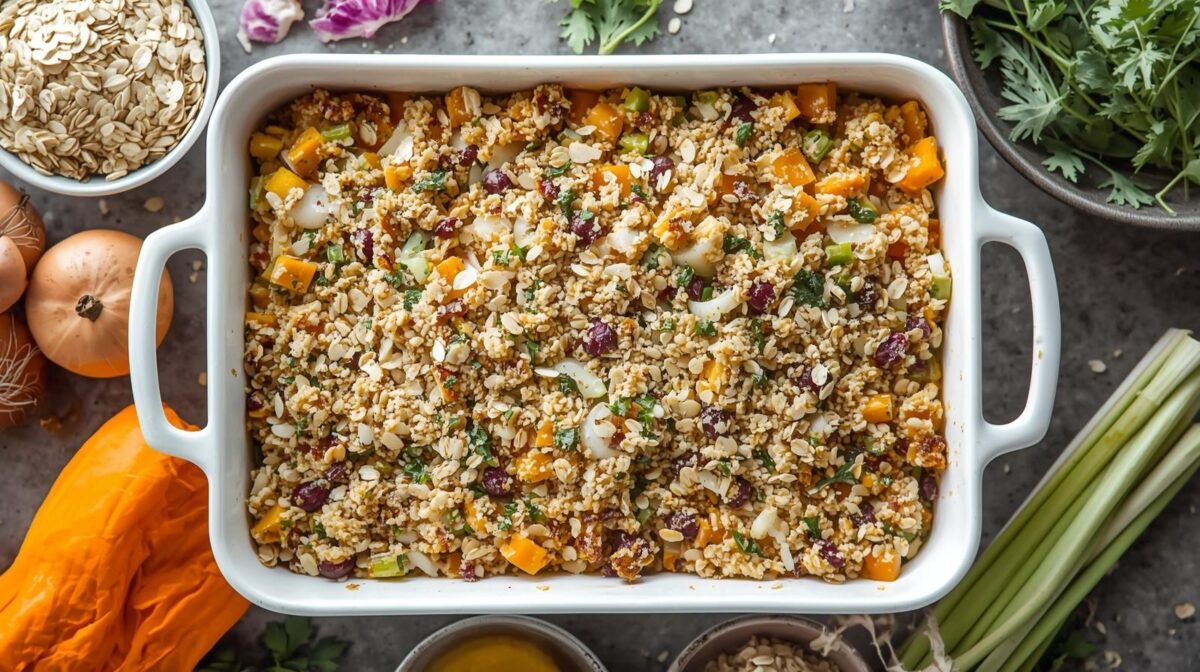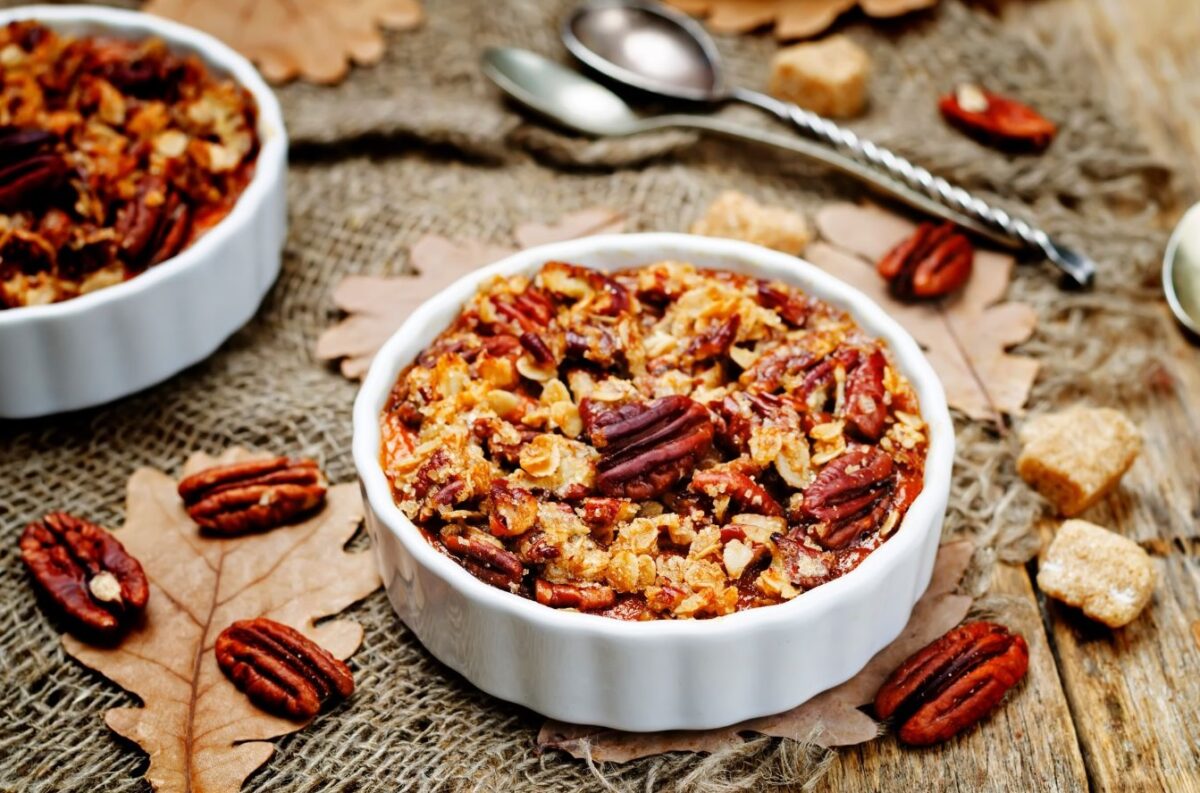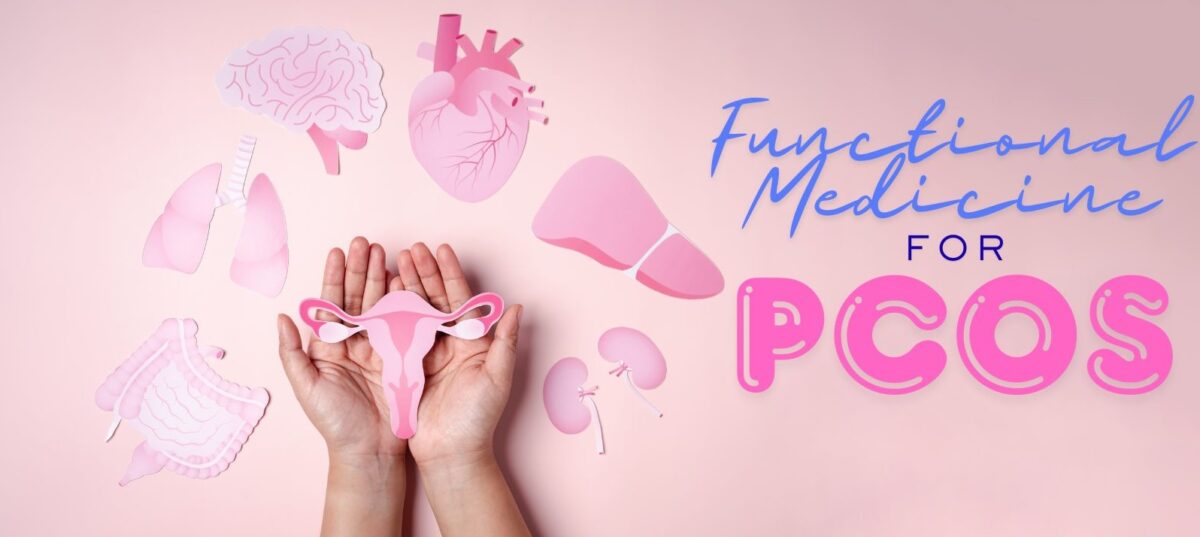Ask the top internet health gurus “what is the best diet for humans?” and you’ll get wildly different answers—Paleo, keto, carnivore, vegan, low oxalate, gluten-free, dairy-free, low-lectins, Mediterranean, pescetarian, various forms of fasting, low carb, low fat, high protein, low protein, and so on.
Health enthusiasts and practitioners often latch onto one particular dietary pattern and become convinced that this is the optimal diet for humans. This has led to many influential people suggesting that very different dietary approaches are “the best diet for human beings”.
The water gets muddier when trying to figure out the best dietary pattern for specific health outcomes such as weight loss, longevity, cardiovascular health, improving diabetes, athletes, optimal health, reducing cancer risk, fighting cancer, genetics, blood type, and the list goes on and on and on.
With all of this dizzying information online, on bookshelves, and in podcasts, how do you know who or what to trust?
There’s a lot of fear-mongering out there against certain diets – it can be confusing and stressful when you constantly hear about how everything you could possibly ingest is going to cause harm in one way or another.
So here’s a little factual, scientific evidence on how to eat food and not die sooner than you should. It’s actually pretty simple. We’ll start by breaking down the great diet debate.
Why No One Seems to Agree on Dietary Patterns
This can be summed up with two simple explanations:
- Remaining relevant
- Cherry picking
500 hours of content is uploaded to YouTube every minute. As of last year, there were over 850,000 active podcasts with over 48 million episodes total. About 144,500 of those podcasts are on the topic of health and fitness.
To stand out in this sea of influencers, you’ve got to regularly be pumping out exciting, stimulating, and compelling content. And what’s better at captivating people than nuanced, on-the-fringe topics like swimming in frozen lakes (Wim Hof), sending your 13-year-old sons into the wilderness as a Rite of Passage into manhood (Ben Greenfield), or eating raw organs as part of your nose-to-tail carnivore diet while insisting that plants will kill you (Paul Saladino).
The more extreme you are, the bigger the crowd you’ll draw. Now, I’m aware that this is a major overgeneralization, but this point does bear some weight in the evolution of an online influencer/health guru. It becomes part of their brand, it’s what they know well. Additionally, these diet evangelists likely found great benefit personally and anecdotally from their nutrition pattern of choice.
Vegan, keto, carnivore, etc. probably worked very well for these individuals and/or several of their patients and clients – which is great. Good results encourage one to research and learn more about their topic of interest. This is where things get complicated and cherry-picking becomes all too easy.
There are over 50,000 quality studies that were done with humans in Pubmed under the search terms “diet” and “nutrition“(quality studies refer to RCTs, clinical trials, meta-analysis, and systematic reviews). You can find studies to both support and refute every single fad diet out there. When one cherry-picks only the supporting information on a topic, it creates a compelling argument that “diet A is good and diet B, C, and D are bad for humans”.
What is most important for you to know is that evidence presented in this way is biased, potentially harmful, and is a complete misrepresentation of the hard work of researchers and scientists.
What’s worse is that the layperson depends on clinicians, nutritionists, health coaches, and doctors to synthesize this plethora of information into applicable and practical protocols. When this is done from a place of bias, it’s not accurate information.
Scientific jargon is hard to understand and translate into practical terms. Cherry-picking is a disservice to patients and clients who depend on clinicians to help them in a way that best supports their individual needs. It’s important to assess both sides of the evidence before drawing conclusions – especially when it comes to people’s health.
How to Decide Which Nutrition Approach is Best
At the foundation, the answer is simple. – You should follow the dietary plan or pattern that works best for YOU.
How do you know if it’s right for you? It should align with the following attributes:
- Compliance – it’s easy for your to stick to the plan without feeling overly hungry, binging, or feeling like you’re having to “suffer through it”. Nourishing your body shouldn’t be that difficult or stressful.
- Progression – you should see improvements to health parameters and make consistent progress towards your health goals. This includes weight reduction or management, improved blood markers, or disease states and you should feel good.
- Nourishment – your dietary preference should not restrict essential nutrients including vitamins, minerals, and protein. It also should supply adequate caloric intake and not be overly restrictive.
- Alignment – The diet aligns with your cultural moral, ethical, and/or religious values.
Whatever pattern you adopt, what’s most important is that you’re seeing improvements to your health while still nourishing your body appropriately. Whether it’s keto, paleo, vegan, carnivore, intermittent fasting, etc., if you can stick to it and your health is getting better (or at least not getting worse if don’t have any health concerns), then it’s a good plan for you.
Below we’ll dive into more of the nuances of different dietary patterns. Depending on your particular health status and/or long-term goals, it may be that one particular approach is better for your unique genetics, lifestyle, preferences, and goals.
Essential Features Regardless of Dietary Preference
Whatever dietary pattern you decide to follow, there are a few essential features that are necessary for humans. It’s important to ensure you’re meeting these basic essentials to ensure your supporting overall health:
Be certain that your health status is improving and not getting worse. This includes regular blood work and tracking specific markers that you’re aiming to improve (blood sugar levels, weight loss, cholesterol, etc.). This should be the foundation.
If you’re not seeing the results you want, it’s best to work with a non-biased health professional with a comprehensive understanding of nutrition to help identity what’s missing. And if you’re current dietary pattern is making your health status worse (such as the standard American diet), you absolutely need to make changes.
2. Make sure you’re getting enough protein. I cannot stress this enough. From a survival standpoint, humans can go without substantial carb and fat intake in their diet. We store body fat as a backup fuel source, and we can produce endogenous carbohydrates (made within our body). But we cannot go without protein from our diet.
Everything in your body is made up of amino acids. Amino acids are the building blocks of protein. There are 20 amino acids that are required for survival. We make 11 of them, the other 9 are considered essential. “Essential” means that our bodies cannot make them and thus we must rely on dietary intake to get enough to keep us alive.
It is possible to get these amino acids from either plant or animal sources, though it takes careful planning to achieve appropriate protein intake and amino acid balance from plants (more of this below).
The ideal amount of protein is at minimum 1 gram per pound of body weight (or of ideal weight based on height for those under or overweight).
3. You still have to exercise. I’ve said it many times before and I’ll say it again. You can’t out-diet a sedentary lifestyle, it just won’t happen. You may see some improvements in the beginning, but after a while, your body will adapt. Movement is an essential pillar of health
How Different Diets Impact Specific Health Concerns
As mentioned above, there are certain nuances that are important to be aware of when it comes to different dietary patterns. Though the information here is supported by scientific research, this information should not be taken as dietary recommendations, prescriptions, or guidance. You should work with a healthcare professional before making any changes to your diet.
Weight Loss & Metabolic Health
Weight loss is a great place to start. The desire to lose weight is often the primary reason many people start a diet or change their existing eating habits so I want to cover the “best” diets for weight loss right off the bat.
More than just for aesthetic purposes, weight loss offers a multitude of health benefits as well. Being overweight or obese increases the risk of several metabolic diseases like diabetes, metabolic syndrome, dyslipidemia, and cardiovascular disease, to name a few. By moving body weight closer to the ideal weight for your height, you subsequently improve a wide range of health parameters and lower disease risk.
So what does the research have to say about the best dietary approach to weight loss?
Scientific evidence overwhelmingly shows that caloric restriction and/or reduced intake of processed foods result in nearly the same amount of weight loss and improvements to metabolic health markers regardless of dietary pattern.
In other words. It doesn’t matter what “diet” you follow. If you’re eating fewer calories, you’ll lose weight.
This is very high-quality evidence too. Six out of the seven studies cited below are meta-analyses which means they are stringent reviews of multiple different trials that compared how different diets worked for weight loss.
Many of these trials also looked at additional health parameters like blood sugar regulation (Hb-A1c, fasting glucose), lipid profiles (HDL, LDL, triglycerides), inflammatory markers (hs-CRP), and blood pressure. All of these markers had similar improvements with adherence to each dietary different dietary pattern. Some were improved more than others with different diets, but improvements were noted nonetheless.
Here’s a link to each of these studies listed by their titles and the conclusion the research came to for each:
- Low Carbohydrate versus Isoenergetic Balanced Diets for Reducing Weight and Cardiovascular Risk: A Systematic Review and Meta-Analysis
This study concluded that “Trials show weight loss in the short-term irrespective of whether the diet is low CHO or balanced. There is probably little or no difference in weight loss and changes in cardiovascular risk factors up to two years of follow-up when overweight and obese adults, with or without type 2 diabetes, are randomised to low CHO diets and isoenergetic balanced weight loss diets.”
- Weight and cardiovascular risk factor reduction in adults: systematic review and network meta-analysis of randomized trials
- Comparison of Weight Loss Among Named Diet Programs in Overweight and Obese Adults A Meta-analysis
- Long Term Weight Loss Diets and Obesity Indices: Results of a Network Meta-Analysis
- A Systematic Review and Meta-Analysis Comparing Heterogeneity in Body Mass Responses Between Low-Carbohydrate and Low-Fat Diets
- Comparison of weight-loss diets with different compositions of fat, protein, and carbohydrates
- Comparison of dietary macronutrient patterns of 14 popular named dietary programmes for weight and cardiovascular risk factor reduction in adults: systematic review and network meta-analysis of randomised trials
Gut Health
There are many different approaches to diets that support gut health. On a foundational level, eating clean, natural, additive-free food is the best approach to support a healthy gut. Here’s a quick checklist of science-backed approaches to various concerns as they relate to the gut.
Microbiome Support
- Fermented foods are a staple for food-first approaches to microbiome diversity. Fiber is important too, but this Harvard study found that 4-6 servings per day of fermented foods improves microbiome diversity more than a high-fiber diet alone (8).
- Fiber is important too. It feeds your gut microbes to support overall gut health. This review is excellent if you want to read more. A diet that’s low in fiber can result in gut mucosal layer degradation, increased susceptibility to pathogens, and impaired gut integrity (9).
- While fiber is essential for gut health, certain types of fibers can have a dark side. These are the FODMAPs or in nerd-speak Fermentable Oligosaccharides, Disaccharides, Monosaccharides, and Polysaccharides which essentially are just different types of carbs/fiber. Some of the “bad” microbes feed on these sugars allowing them to overgrown, leading to gut issues like Small Intestinal Bacterial Overgrowth or SIBO (which is basically a compilation of several different GI symptoms caused by these microbes similar to IBS). The low-FODMAP diet is one of the most well-researched therapeutic diets for improving IBS symptoms (10, 11, 12,13, 14,15)
- Pesticides, fungicides, and herbicides in foods greatly impair the health of the gut microbiome – especially glyphosate (16,17). Eating organic foods is imperative for protecting your microbes and many other reasons that I’ve covered in previous articles.
- Sucralose, aspartame, and other artificial sweeteners have come under the spotlight as potentially being damaging to the microbiome. However, recent research suggests that short-term and longer sucralose and artificial sweetener intake does not negatively impact the microbiome (18, 19). Personally, I believe it’s much better to drink a diet soda than a sugar-sweetened one (in moderation and with adequate water intake), dietary changes do not always require the all-or-nothing mindset to see noticeable improvements. Small incremental changes can make big differences.
Leaky Gut
- Fiber is the most researched nutritional component for preventing and improving leaky gut (20) and it does so by supporting your microbiome as mentioned above (21).
- Adequate Vitamin, mineral, and phytonutrient intake is important for supporting healthy gut barrier function (22).
- Glutamine (23, 24, 25) is one of the most therapeutic amino acids for the gut. Cells of the colon die and regenerate every 3 days and they need a lot of glutamine to regrow. One study found that 30g of glutamine per day for 7 days after abdominal surgery enhanced healing and reduced gut permeability (26).
- Food Additives and emulsifiers (like gums, lectins, mixers, and thickening agents) have been found to impact both the gut microbiome and contribute to a leaky gut (27). Thus further emphasizing the importance of whole-food-based diets.
IBS/IBD, and other generalized gut symptoms:
- All of the approaches discussed above work to address the root cause issues of IBS and IBD. The first step is supporting a healthy gut environment, balanced microbiome, and a strong gut lining as these are foundational elements that contribute to a host of gut issues.
- An Elimination diet, the low-FODMAP diet, Whole-30, or the Autoimmune-Paleo diet all align with the parameters discussed above. I often suggest that clients either follow one of these plans or search for foods/recipes that meet one or all of these dietary parameters. This is an excellent approach to gut healing.
Autoimmune Diseases:
When it comes to diets and autoimmune diseases (AID) leaky gut and cross-reactivity have been speculated as a culprit. This hypothesis states that a leaky gut lining allows larger particles of undigested food to sneak into the blood. Once here, the immune system recognizes it as a ‘foreign invader’ and makes antibodies against the food particles. If the particle’s chemical structure looks similar to certain tissues within our body, our immune system also attacks these tissues. It’s as though it gets ‘caught in the cross-fires’ of the immune system’s protective mechanisms (28).
Gluten remains a hot topic in AID as leaky gut (caused by wheat gluten) may contribute to the development of auto-antibodies due to cross-reactivity. It may be worth trying a gluten-free diet (GFD) like those mentioned above and assessing if symptoms improve (29). It may be beneficial for some, though quality research to support that a GFD improves AID parameters is lacking. One review found no improvements to MS, T1D, or Hashimoto’s with gluten elimination (30).
Many studies that support a GFD for AID are also correlative and not causative (meaning an association was found between increased risks for AID with higher gluten/grain intake, but this does not mean that gluten itself is the cause). Even still, it is worth be worth being mindful of gluten intake early in life (sprouted, fresh, whole grains as opposed to processed, and in minimal quantities) in efforts to support the prevention of AID development later in life (31).
Dairy is another dietary factor that’s been named as a cross-reactive molecule associated with AID. Again, I believe the same principles as with gluten apply here – try it, see if it works for you, and be mindful of the amount that we feed our children (29, 30, 31).
I personally gave up both dairy and gluten for about 2 years and did not notice any improvements in my T1D. At the same time, I did experience improvements to gut symptoms and overall wellbeing. I now enjoy clean, unprocessed dairy and wheat products in limited amounts with no issues – sometimes it’s just a matter of giving the body a break and time to heal. Many times foods that previously caused symptoms can be enjoyed again following gut healing.
Overall, the same dietary principles discussed for improving gut health can help improve many different AIDs. Reduce added sugars, processed foods, and cured meats; eat fresh, whole, clean, lean, organic, grass-fed/wild-caught/free-range foods; balance your macros, eat plenty of protein, stay hydrated, and get adequate vitamin, mineral, and phytonutrients daily.
Neurological Disease:
I did want to make a note that the keto diet has shown to be very effective in children and adults with epilepsy. In fact, this population was where keto was first discovered and used due to its efficacy in reducing seizures (32).
The Controversy Between Plant-based Diets vs. Animal Protein
This is likely the most disagreed upon topic when it comes to dietary patterns for health and longevity.
I’m not here to argue for one side or the other. While it is true that animal-based proteins are considered higher quality proteins (they are complete proteins meaning they have the appropriate balance of amino acids that our bodies need), it is possible to get achieve adequate protein intake from a vegan diet with careful planning and supplementation.
What I am here to argue is that you have to eat adequate protein if you want to live long and experience good health.
Muscle mass is a major predictor of longevity meaning the more muscle mass you have, the better your chances of living longer (33). This study demonstrates that if you want to live a long, healthful life, you must make it a priority to create healthy, strong muscles along with other healthy lifestyle behaviors (like a good diet, don’t smoke, social connection, stress management, etc.)
Healthy, strong muscle requires 2 things:
- Protein intake – the building blocks
- Exercise – to stress the muscle so they can utilize the building blocks.
This is why I always say “you can’t out-diet a sedentary lifestyle”.
Muscle is more than just a longevity organ. It’s also the primary site of glucose disposal within the body (34). If you don’t have much muscle and/or you’re not exercising your muscle, there’s nowhere for sugar to go in your body (after your liver is filled up) so it stays in your blood. Thus, low muscle mass and inactivity increase your risk for diabetes and obesity.
Sarcopenia is the natural loss of muscle that happens with age. Ideally, you should start focusing on growing and maintaining healthy muscle as early in life as possible, at least before 40 to ensure you have a good amount to prepare your body for the aging process. Though it’s never too late to start (35).
Skeletal muscles during exercise release several chemicals within your body that improve cognitive function and support neuronal growth (36).
Low muscle mass is associated with immune system dysregulation and increased inflammation (37, 38).
More muscle mass results in a reduced risk for osteoporosis and fractures (39).
I could go on and on but you get the point. Having muscle leads to numerous positive health outcomes. In fact, there are no adverse health outcomes associated with healthy muscle mass. If exercise and protein are the two key ingredients for healthy muscle, then why are so many doctors and researchers pushing people to go fully plant-based to support health?
Why Some Researchers Say Protein is Bad
Much of the controversy between protein and vegan researchers began with a 2014 study published in Cell Press Journal (a high-quality, stringent publication) where researchers used NHANES data to assess the risk of protein intake on cancer and all-cause mortality (40).
Studies like the get a lot of spotlight in the press and then biased parties (like the documentary ‘Game Changers’) latch onto an extrapolated piece of data without critically analyzing all parts.
When we review the findings, we find there are many flaws in this study. The review of the NHANES survey data was not correctly analyzed, and the researchers did not parse out the quality of dietary patterns, thus subjecting the finding to major confounding biases (i.e. some people who eat higher protein diets also have very unhealthy lifestyles, processed food intake was not taken into account, and people who follow a vegan diet are far more likely to follow healthier lifestyle habits overall).
Additionally, even with all of these confounding biases present, the plant-based diet was only associated with lower cancer risk and mortality in those under the age of 65. In those over 65, lower protein intake was associated with an increased risk of mortality (in fact, this was even noted as part of the study title! But this message was largely overlooked by the media).
And lastly, these results are correlative and not causative. Just because X is associated with Y, that does not mean you can definitively say that X causes Y to happen.
You can reach a balanced protein intake from a vegan diet, though it often requires supplementation. A study found that the same muscle protein synthesis (muscle growth) can be achieved from exercise with either a vegan or animal-based protein diet as long as you get a balanced amino acid intake (41) – it’s important to note that this study was only in men. Another found that soy protein with a leucine content that matched that of whey protein resulted in the same muscle growth as whey in untrained men and women who followed the same workout regimen (42).
You need 3-4g of leucine per meal in order for your body to place the protein you eat into your muscle and plant proteins are very low in leucine (43). I always recommend that my vegan/plant-based clients supplements with essential amino acids around each meal to ensure their bodies can make use of the protein they eat (this is a great brand).
What About Gut Issues Associated with Protein intake?
There’s a lot of debate on the impact of protein on gut microbiome diversity and the downstream health outcomes (44, 45). Some research suggests that certain types of protein (red meat, eggs, cured meats) can result in a more pathogenic pattern of gut bacteria and/or dysbiosis (45). The problem with this research though is that most have only been done in mice. Evidence in humans is very much lacking.
An excellent review discusses the importance of protein intake and microbiota diversity in older adults (44). The researchers give evidence for the pros, and cons of protein on gut microbiome diversity while pointing out that this topic has not yet been explored enough in humans to support clinical relevance. Fiber intake along with clean, lean protein appears to offset any potential adverse effects to the microbiome that could result from protein intake. This further emphasizes the importance of fresh, whole, clean, foods.
Cancer and Protein intake
We often hear about carcinogens in meat that can lead to cancer (46). When we really dive into the research, we find that these associations are largely due to cooking and preparation methods. Frying, charring, well-done, and nitrate/nitrite/sulfate/sulfite-added meats are most associated with colorectal cancer risk but not other cancers (47, 48, 49).
Grilled meat that has been marinated in vegetable sauces and spices and/or consumed with vegetables, or meat that has been baked, broiled, boiled, and braised has far fewer carcinogenic compounds and results in the detoxification of more potentially harmful compounds (50, 51, 52).
Protein and Kidney Health
Recent research has shown that we were wrong about high protein intake being damaging to kidney health. This viewpoint was based on outdated testing methods and is no longer supported by research (53).
Now if you are someone with an existing diagnosis of kidney damage, failure, or other renal diseases, protein intake could put additional stress on your kidneys and it is important to speak with your doctor before making dietary changes.
If you are still concerned about potential damage due to protein intake, as long are you are eating plenty of fresh fruits and vegetables, getting plenty of calcium, magnesium, and potassium in your diet, and drinking plenty of water, you don’t need to worry (54).
The Best Diet for Humans
You are unique. A specific and rigid dietary approach that works for some may not be the best for you as an individual.
This is why I believe it’s irresponsible and potentially harmful for anyone to claim that there is one “optimal dietary pattern” that humans are “meant” to follow or that we were “designed” or “evolved” to follow.
The best diet that you can follow is one that you can comply with, that improves your health, and aligns with your personal religious, cultural, moral, and ethical values.
There are some basic characteristics that all dietary patterns should meet to ensure it’s health-promoting:
- Supplies adequate energy (calories) to maintain daily functions and support your metabolic demands
- Supplies at least 1g of protein per pound of your ideal body weight.
- Is low in processed foods, rich in fresh fruits and vegetables, includes fermented foods, micronutrient-rich, organic, and wild – just as nature intended.
One thing that we can all agree upon is the current state of our commercial farming, agriculture, and processed food industry is very out of touch with ethics, morals, health-promoting, and environmental-supporting practices. So remember, you have a voice in where you spend your money.
There has been a recent wave of an increase in health food thanks to more people purchasing these items. This is where we all have the opportunity to make change happen. Keep buying healthy foods so that this wae grows bigger.
If you’re passionate about helping our endangered pollinators like honey bees and monarch butterflies, but organic foods. It’s the pesticides on our lawns and in our food that are wiping out their population – it’s not because we don’t have enough milkweed and wildflowers planted in our yards.
Feed your children healthful, clean, unprocessed foods so that they develop healthy nutrition habits early in life. This will set their metabolisms up for better long-term health outcomes; they will have a much better understanding of nutrition, they will know how to nourish their bodies in the ways outlined above, and they will not be troubled with the misinformation on nutrition that plagues the internet because they will have a solid foundation they can trust.














